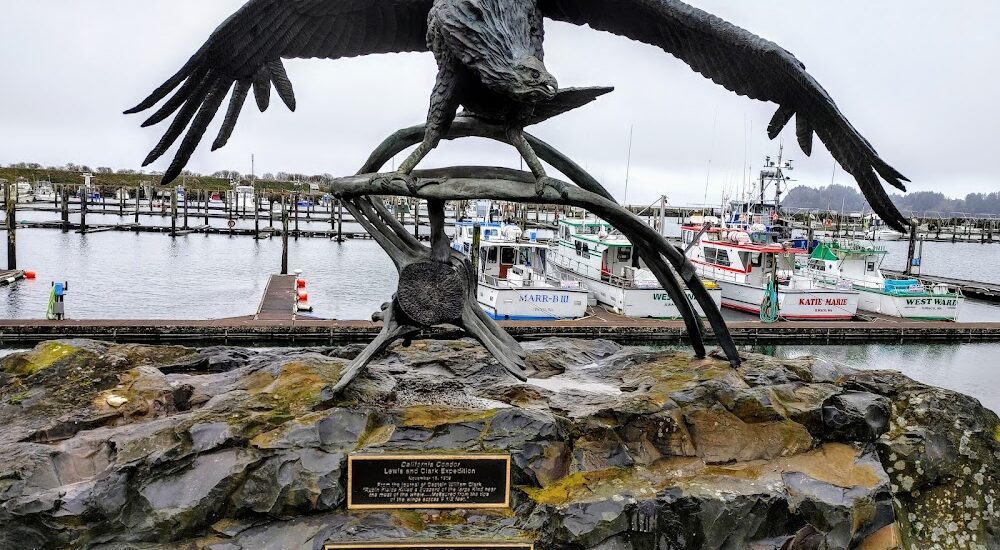Welcome to the California Condor Plaque and Statue in Ilwaco, Washington—a place where history and conservation efforts intersect. While the California condor is most closely associated with the state of California, its story has a broader reach that includes significant efforts in places like Ilwaco. As you stand before the statue, you are not just looking at a piece of art but at a symbol of one of the most remarkable wildlife conservation stories in America.
The California condor once soared across the skies of North America, from British Columbia down to Baja California. However, by the 20th century, their numbers plummeted due to poaching, lead poisoning, and habitat destruction. By 1987, the condor population had dwindled to just 27 birds, prompting a controversial but necessary decision to capture all remaining wild condors and place them into a captive breeding program.
This statue commemorates the tireless efforts of conservationists, scientists, and volunteers who have worked to bring the California condor back from the brink of extinction. The program has been a success, and today, over 400 condors are thriving in the wild and captivity—a testament to human dedication to reversing environmental damage.
Ilwaco’s connection to the condor may seem unusual given its geographic location, but it reflects the collective responsibility for wildlife conservation. The plaque at this site shares the history of the condor’s plight and the ongoing efforts to ensure their survival. It stands as a reminder that conservation is a shared effort that transcends borders and states.
As you take in the sight of this statue, imagine the immense wingspan of these majestic birds, soaring high above the rugged landscapes. Remember the individuals who dedicated their lives to this cause—scientists like Noel Snyder, who played a pivotal role in the recovery efforts, and organizations like the Peregrine Fund and the U.S. Fish and Wildlife Service, which have been instrumental in the condor’s survival story.
This site is more than a landmark; it’s a tribute to the resilience of nature and the power of collective action.





